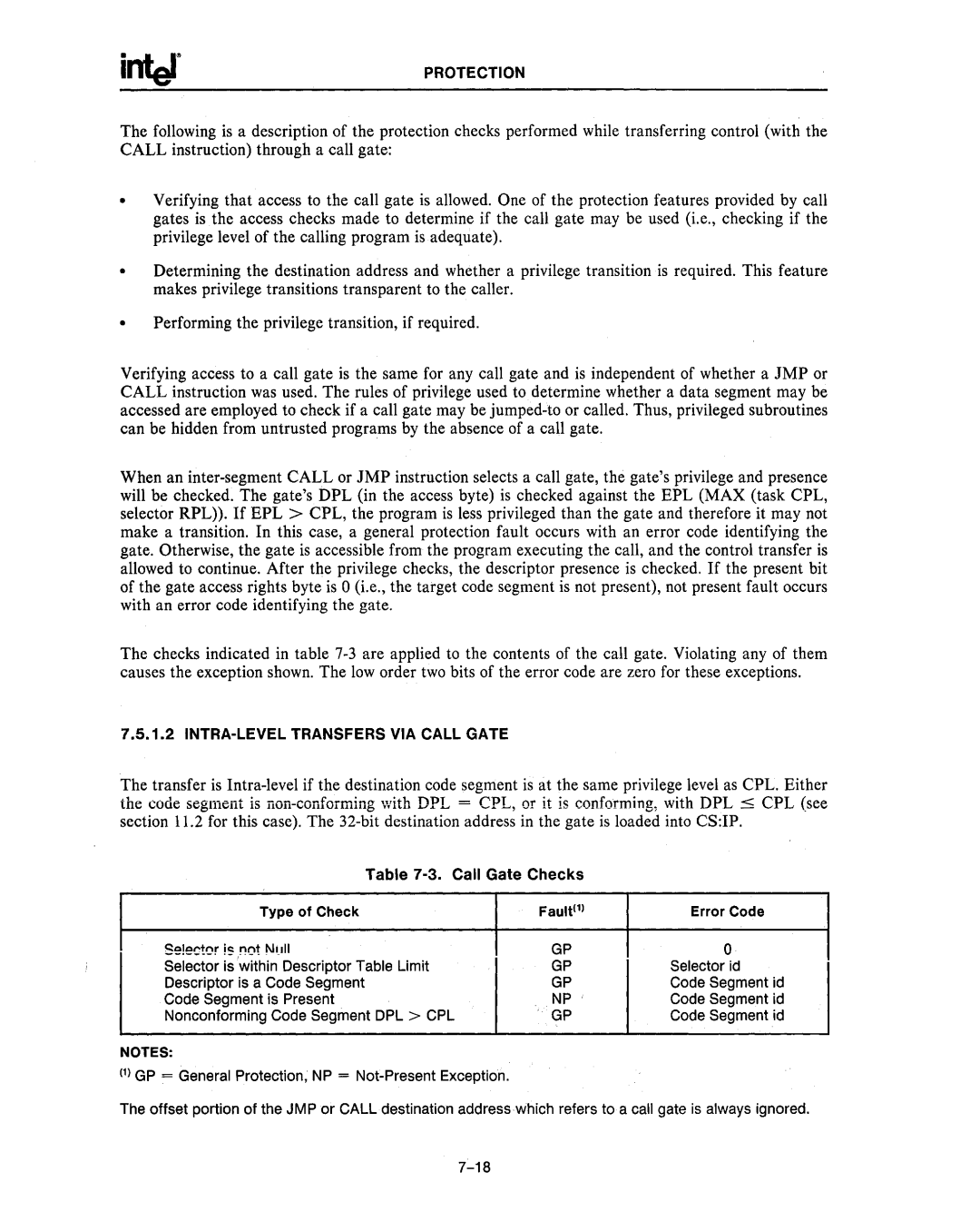
PROTECTION
The following is a description of the protection checks performed while transferring control (with the CALL instruction) through a call gate:
Verifying that access to the call gate is allowed. One of the protection features provided by call gates is the access checks made to determine if the call gate may be used (i.e., checking if the privilege level of the calling program is adequate).
Determining the destination address and whether a privilege transition is required. This feature makes privilege transitions transparent to the caller.
Performing the privilege transition, if required.
Verifying access to a call gate is the same for any call gate and is independent of whether a JMP or CALL instruction was used. The rules of privilege used to determine whether a data segment may be accessed are employed to check if a call gate may be
When an
The checks indicated in table
7.5.1.2 INTRA-LEVEL TRANSFERS VIA CALL GATE
The transfer is
Table 7-3. Call Gate Checks
Type of Check | Fault(1) |
Se!eC!0r j" ,,(It NIIII | GP |
Selector is within Descriptor Table Limit | GP |
Descriptor is a Code Segment | GP |
Code Segment is Present | NP |
Nonconforming Code Segment DPL > CPL | GP |
NOTES: |
|
(1) GP = General Protection, NP = |
|
Error Code
0
Selector id
Code Segment id Code Segment id Code Segment id
The offset portion of the JMP or CALL destination address which refers to a call gate is always ignored.
